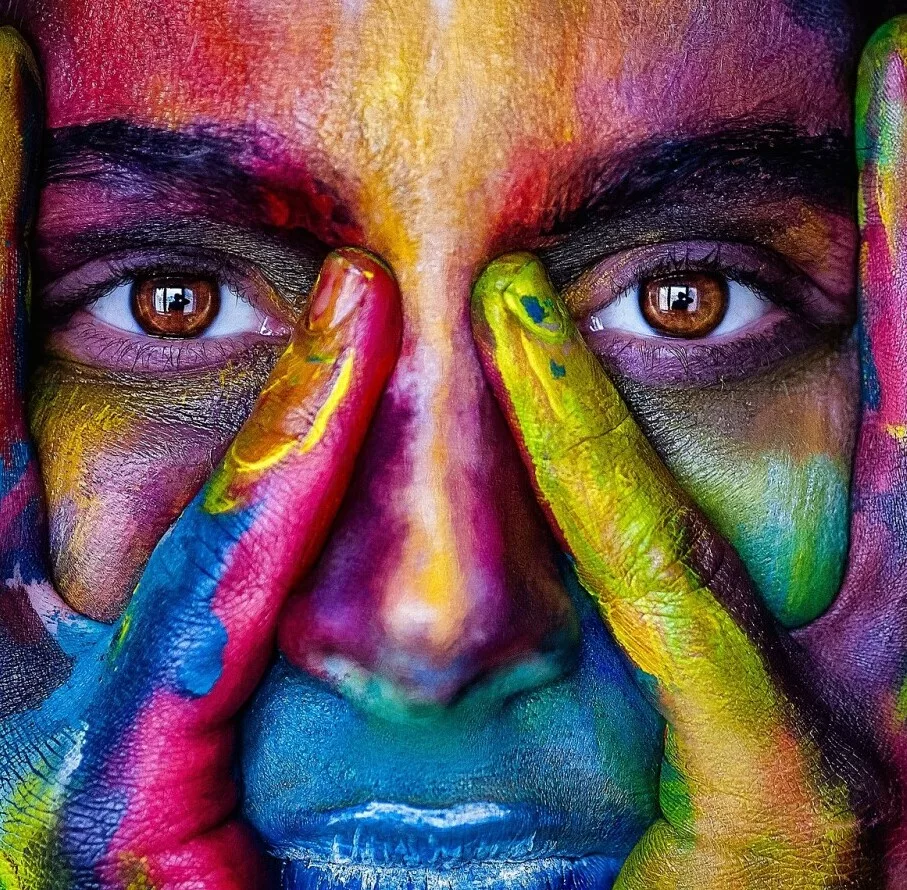
In the ever-evolving of contemporary living, The phenomenon mindfulness extends its profound influence into the world of artistic endeavours, where the principles of it have not only become integral but have also acted as catalysts, nurturing the growth and depth of creative processes across epochs.
Mindfulness, in art and literature, is not a recent innovation but rather a timeless force that has silently shaped and enriched the creative landscape throughout the annals of history. Its roots are intertwined with the very essence of human consciousness, drawing from ancient philosophies and spiritual traditions. As we start an exploration of the evolution of mindfulness in art and literature, our journey will traverse the historical narratives that birthed these ideas, examine their transformative impact on creative expressions, and dive into the contemporary reflections that continue to redefine the intersection of mindfulness and artistic ingenuity. Join us as we together going to explore the relationship between mindfulness and the artistic process.
In grasping the essence of mindfulness in the context of creativity, we find it to be a profound engagement with the creative process, urging individuals to be entirely present. This practice beckons one to cultivate awareness not only of their thoughts and emotions but also of the surroundings that envelop their creative pursuits. At its core, mindfulness in art is about a profound connection between the artist and their craft, creating an environment where the quality of creative output is elevated through a heightened sense of presence and connection with the artistic endeavour and the world around
- Historical Roots: Buddhist Influences on Art and Literature
-
- This section highlights the origins of mindfulness in art, tracing it back to Buddhist influences. Mindfulness is shown to have early connections with creativity, particularly in art and literature that focus on human consciousness. The reflective nature of these artistic expressions is linked to the philosophical and meditative aspects of Buddhism.
- The Renaissance Era: A Mindful Reawakening
-
- The Renaissance period is characterized by a significant shift in artistic expression. Artists and writers during this time, inspired by Humanism, began to explore introspective themes. The mention of figures like Dante and Shakespeare suggests a deeper exploration of the human psyche, marking a reawakening of mindfulness in the creative process. The artists of this era moved beyond mere representation to delve into the inner workings of the human mind.
- Romanticism to Modernism: An Evolution of Inner Landscapes
-
- The Romanticism period is associated with a connection between mindfulness and nature. The sublime, often found in nature, is seen as a gateway to introspection. Transcendental literature, part of the Romantic movement, is mentioned as celebrating self-awareness and societal contemplation. As the passage progresses into the modernist movement, it notes that inner turmoil found expression through innovative art styles. This reflects the complexities of the mindful human condition, suggesting that artists used their work to express the inner landscapes of the mind in response to the challenges of the modern world.
Contemporary Reflections: Mindfulness in Today’s Art and Literature
In the contemporary era, the influence of mindfulness on artistic practice remains profound, shaping not only the creative process but also the way audiences engage with and interpret art. Current trends within the artistic landscape underscore the enduring connection between mindfulness, creativity, and the consumption of artistic works.

Mindfulness in Literature: A Force for Empathy and Social Change
In the realm of literature, a notable transformation has occurred. Literature has evolved beyond traditional storytelling to become a powerful force for empathy and social change. Contemporary writers explore mindfulness as a means of fostering understanding and unity among readers. Themes of self-awareness, mindfulness, and introspection are woven into narratives, challenging readers to reflect on their own lives and the broader societal context.
Literature as a Reflective Mirror: Mindfulness and Personal Growth
Contemporary authors, much like their predecessors during the Renaissance and Romantic periods, use literature as a reflective mirror. The exploration of characters’ inner thoughts and emotions delves into the complexities of the human experience. Mindfulness becomes a tool for characters and readers alike, offering a pathway to personal growth, understanding, and a deeper connection with the world around them.
The Digital Age: New Dimensions in Artistic Expression
The advent of the digital age has introduced unprecedented dimensions to artistic expression. Artists leverage technology to create interactive and immersive experiences that serve as mediums for reflection. In the realm of visual arts, interactive installations and virtual reality experiences provide audiences with a unique opportunity to engage with mindful themes. These experiences not only captivate the senses but also encourage contemplation, blurring the lines between observer and participant.
Art as Interactive Meditation: Immersive Engagement with Mindful Themes
Interactive experiences in contemporary artwork serve as a form of interactive meditation. Viewers are not passive observers but active participants in the artistic journey. This immersive engagement allows individuals to experience mindfulness firsthand, as they navigate through installations or digital landscapes that prompt introspection and self-awareness. The fusion of technology and art creates a bridge between ancient contemplative practices and modern expression.
Future Prospects: Shaping Emergent Narrative Forms
As we cast our gaze into the future, the role of mindfulness in shaping emergent narrative forms becomes increasingly pivotal. The ongoing evolution of technology is anticipated to act as a catalyst for the integration of mindfulness into novel and innovative artistic experiences. This forward-looking perspective suggests that the intersection of mindfulness and creative expression will not only persist but also play a transformative role in the narratives that unfold in the artistic landscape of the future.
Mindfulness and Technological Evolution: A Symbiotic Relationship
The trajectory of technology holds immense potential for reshaping the canvas of artistic expression. As emerging technologies such as augmented reality, artificial intelligence, and immersive virtual environments continue to evolve, the integration of mindfulness practices is likely to become more nuanced and sophisticated. Artists may harness these technological tools to create immersive experiences that not only captivate the senses but also facilitate mindfulness, offering new dimensions for introspection and self-discovery.
Interactive Narratives: Redefining Audience Participation
The future of narrative forms may witness a profound shift towards interactive storytelling. Integrating mindfulness into narrative experiences could redefine the relationship between the creator and the audience. Interactive narratives, driven by mindful themes, might allow participants to shape the unfolding story, fostering a deeper sense of engagement and personal connection. This evolution aligns with the ongoing trend of transforming spectators into active participants in the artistic process.

Mindfulness and Virtual Realities: A Journey Within
As virtual reality technologies continue to advance, the potential for creating immersive mindful experiences grows exponentially. Artists may craft virtual landscapes that serve as contemplative spaces, guiding individuals on journeys within themselves. Virtual reality installations could become a medium for self-exploration and reflection, pushing the boundaries of traditional artistic encounters and offering audiences a transformative escape into mindful realms.
Beyond Visual Arts: Mindfulness in Multisensory Experiences
The integration of mindfulness is not limited to visual arts alone; it extends to multisensory experiences. Future artistic endeavours may explore the amalgamation of visual, auditory, and tactile elements to create immersive environments that cater to a diverse range of sensory perceptions. Such multisensory experiences could deepen the impact of mindfulness, appealing to a broader audience and making the practice more inclusive and accessible.
Education and Mindfulness in Creative Expression: Nurturing Future Artists
Looking forward, the integration of mindfulness in education is poised to play a crucial role in nurturing the next generation of artists. Educational curricula may incorporate mindfulness practices to encourage young minds to explore their creativity, fostering a holistic approach that values self-awareness and emotional intelligence alongside technical skills. This shift could result in a generation of artists who not only produce aesthetically compelling works but also contribute to a more mindful and empathetic society.
In Conclusion: A Rich Tapestry of Mindful Creativity
In conclusion, the integration of mindfulness into artistic endeavours spans a rich tapestry of history, evolving from ancient Buddhist influences to its present impact on contemporary art and literature. As we peer into the future, the synthesis of mindfulness and technological innovation holds the promise of reshaping the very fabric of creative expression. This exploration underscores how mindfulness not only enhances creativity in the present but also acts as a guiding force shaping the narratives that will unfold in the artistic landscapes of tomorrow. The ongoing dialogue between mindfulness and art is destined to continue weaving a narrative that transcends the boundaries of time, offering profound connections between the artist, the work, and the ever-evolving audience.
Thank you for your time and please feel free to share your opinion here .
Cheers!



Hello Ela, I came back to look for some more updates from you and I found this 🙂
I enjoyed reading your material as always. I found this post very interesting on how these mediums can guide us toward a deeper understanding of ourselves and the world.
I have found that integrating mindfulness practices with creative pursuits really builds on my appreciation for the arts. Your take has also added depth to my approach.
Do you have any favorite artists or authors who embody mindfulness in their work? I would love to learn more.
Thanks again!
Chris
Hello Chris! Thank you for your sweet comment, Well the world of art in amazing, I paint too and when I start creating my abstract painting , I start a mindfulness journey which goas beyond time and place ,believe me it turns out an amazing opera . Well I love mindful artists !
This insightful exploration of mindfulness in art and literature truly delves into the profound impact of present-moment awareness on creative processes across history and into the future. Your elucidation of mindfulness’s roots in ancient philosophies and its evolution through different artistic epochs is both enlightening and inspiring.
Reflecting on your discussion of the Renaissance era, I’m curious: How do you perceive the role of mindfulness in shaping artistic movements during times of significant societal change? Do you believe that mindfulness serves as a means for artists to navigate and respond to the challenges of their respective eras? Looking forward to your thoughts!
Hello Hanna! Thank you for your comment, Of course yes I am an artist I paint and when I am painting with mindfulness turns out some out standing opera! Thanks again dear.